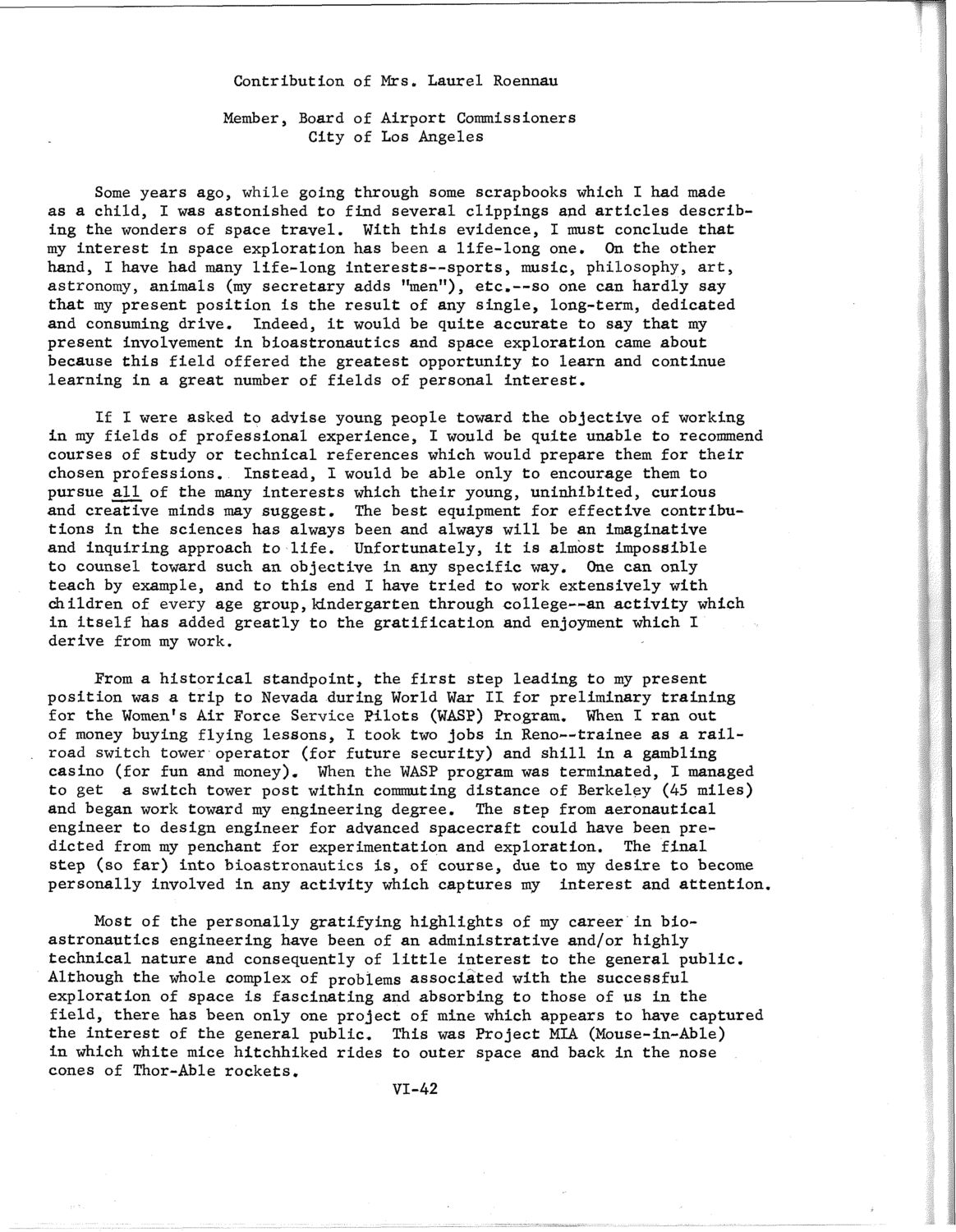| |
| |
Caption: SWE - Proceedings of the First International Conference of Women Engineers and Scientists
This is a reduced-resolution page image for fast online browsing.

EXTRACTED TEXT FROM PAGE:
Contribution of Mrs. Laurel Roennau Member, Board of Airport Commissioners City of Los Angeles Some years ago, while going through some scrapbooks which I had made as a child, I was astonished to find several clippings and articles describing the wonders of space travel. With this evidence, I must conclude that my interest in space exploration has been a life-long one. On the other hand, I have had many life-long interests—sports, music, philosophy, art, astronomy, animals (my secretary adds "men"), etc.—so one can hardly say that my present position is the result of any single, long-term, dedicated and consuming drive. Indeed, it would be quite accurate to say that my present involvement in bioastronautics and space exploration came about because this field offered the greatest opportunity to learn and continue learning in a great number of fields of personal interest. If I were asked to advise young people toward the objective of working in my fields of professional experience, I would be quite unable to recommend courses of study or technical references which would prepare them for their chosen professions. Instead, I would be able only to encourage them to pursue all of the many interests which their young, uninhibited, curious and creative minds may suggest. The best equipment for effective contributions in the sciences has always been and always will be an imaginative and inquiring approach to life. Unfortunately, it is almost impossible to counsel toward such an objective in any specific way. One can only teach by example, and to this end I have tried to work extensively with children of every age group, kindergarten through college—an activity which in itself has added greatly to the gratification and enjoyment which I derive from my work. From a historical standpoint, the first step leading to my present position was a trip to Nevada during World War II for preliminary training for the Women's Air Force Service Pilots (WASP) Program. When I ran out of money buying flying lessons, I took two jobs in Reno—trainee as a railroad switch tower operator (for future security) and shill in a gambling casino (for fun and money). When the WASP program was terminated, I managed to get a switch tower post within commuting distance of Berkeley (45 miles) and began work toward my engineering degree. The step from aeronautical engineer to design engineer for advanced spacecraft could have been predicted from my penchant for experimentation and exploration. The final step (so far) into bioastronautics is, of course, due to my desire to become personally involved in any activity which captures my interest and attention. Most of the personally gratifying highlights of my career in bioastronautics engineering have been of an administrative and/or highly technical nature and consequently of little interest to the general public. Although the whole complex of problems associated with the successful exploration of space is fascinating and absorbing to those of us in the field, there has been only one project of mine which appears to have captured the interest of the general public. This was Project MIA (Mouse-in-Able) in which white mice hitchhiked rides to outer space and back In the nose cones of Thor-Able rockets. VI-42
| |